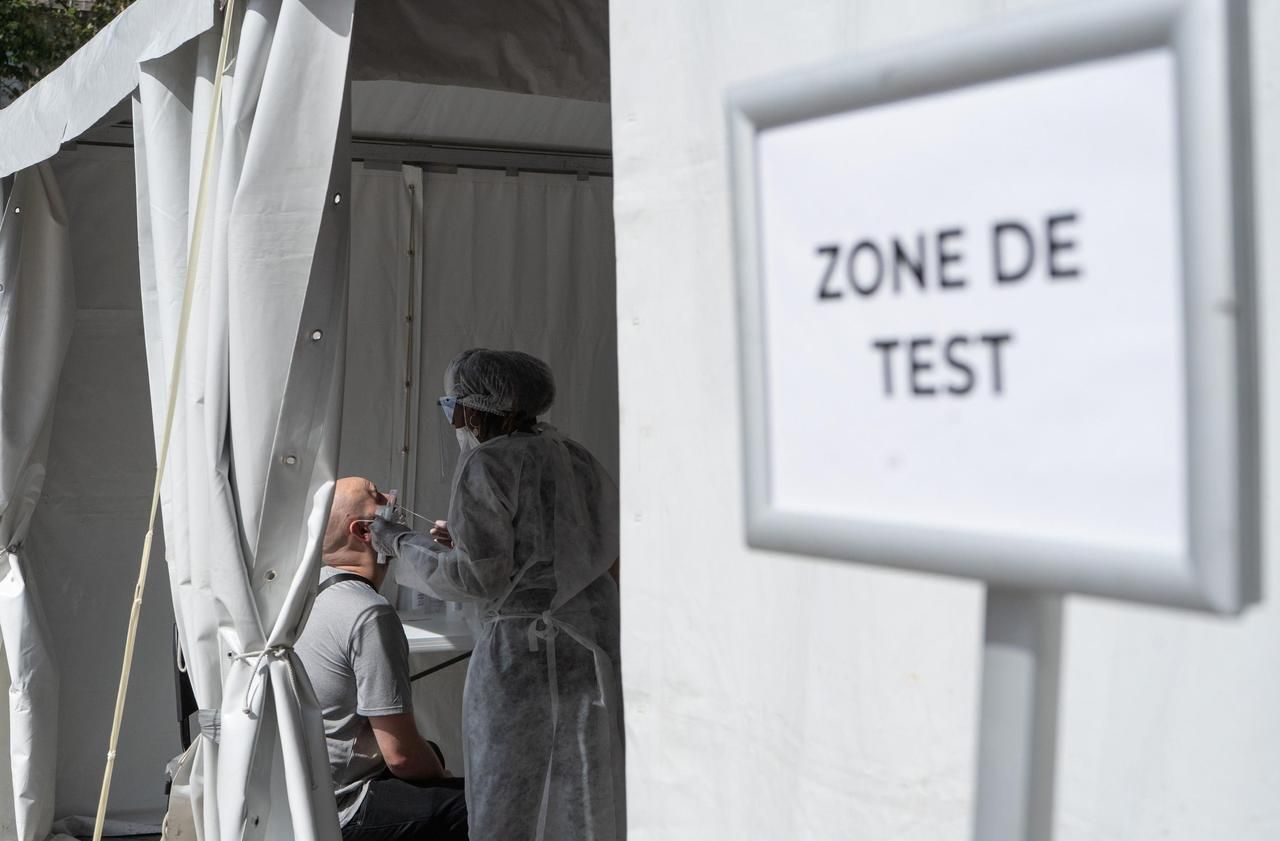It sows chaos in Brazil, will it spread massively in France? "A risk of extension of the Brazilian variant P1 must be taken into account during the summer of 2021", warns the Scientific Council in its latest opinion, sent to the government on April 16 and made public two days later. This strain is at the origin of an outbreak of the epidemic in Brazil but also in Guyana and in other countries of South America, leading the government to impose a quarantine of ten days on the arrival of several territories. from Saturday. The aim is to limit as much as possible the possibilities for this variant of SARS-CoV-2 to circulate in France, where it is already present.
For the moment, the results of the "screening" of the positive tests are rather reassuring.
This method makes it possible to identify whether a sample is linked to a particular strain of SARS-CoV-2.
The so-called “South African” and “Brazilian” variants (also called 20J / 501Y.V3) are estimated together because a mutation common to both is tracked.
They represent a little less than 5% of the positive cases screened across the whole of France as of April 17, a rate that has fluctuated between 3.5 and 5.5% since the beginning of February.
More than 80% of variants in Guyana
The share of the Brazilian variant alone would be less than 1%, according to the results of the latest Flash survey. This is based on the sequencing of the samples, that is to say a complementary technique to the screening and which makes it possible to isolate all the genetic lines. But it is only carried out, on a small sample, twice a month for the moment.
12 departments, including three overseas (Guyana, Réunion, Mayotte) and two in Île-de-France (Val-de-Marne and Seine-Saint-Denis) are more than 8% Brazilian and South African variants , according to the latest screening data. Guyana is very much in the lead, with more than 80% of positive tests due to one of the two strains (overwhelmingly the one originating in neighboring Brazil, of course). "The P1 variant has been circulating on Guyanese territory since March" and "a case-control investigation attempts to establish the profile and the evolution of patients admitted to intensive care according to the variants", indicates the Scientific Council.
The proportion has clearly increased in several departments in recent days, and the increase exceeds 50% in one week in 25 of them, including Creuse. In metropolitan France, this rural territory now exceeds the Moselle at the top of those most affected, with more than 30% of the positive tests screened linked to one of these two variants. This very high rate is mainly explained by the detection of clusters in nursing homes, with many residents and staff infected. 38 positive cases have for example been identified since the end of March in the establishment of Auzances, reports France Bleu. The proportion of variants in the department reaches particularly high levels among the 80-89 year olds (44.4%) and the over 90s (72.7%).
This very sparsely populated area is one of those where the fewest positive tests are recorded (around 30 per day on average).
The ratios can therefore quickly increase when clusters with several dozen positive cases appear.
But the risk is that the variants will spread strongly between generations within the population, then to neighboring territories.
Read also5% of new cases in France: why the South African and Brazilian variants do not soar
Even if it often regresses, the so-called “British” variant nevertheless remains in the majority in all the departments of metropolitan France.
In this kind of "competition" between strains, it is for the moment he wins.
"We know that there is a competition between variants and the one who comes first is always one step ahead", recently told us Yves Gaudin, virologist at the Institute for Integrative Cell Biology in Paris-Saclay and Director research at CNRS.
"Metropolitan France is probably currently partly protected by the presence of the UK variant" echoed the Scientific Council.
The “watch race” continues
But that might not last, especially with regard to the Brazilian variant.
This is not only estimated between 40 and 120% more transmissible, according to the latest risk analysis from Public Health France and the National Reference Center for Respiratory Infections Viruses, but it also partly escapes immunity, whether it is related to the vaccine or to a previous infection.
It thus has a competitive “advantage” against the British variant, which is “only” more transmissible and “probably” also more lethal.
VIDEO.
Vaccines and variants: "The most vulnerable people will have to be reminded"
The risk will arise "if we observe a decrease in the UK variant and vaccination coverage with mRNA vaccines on the rise, but at a still insufficient level", indicates the Scientific Council. Not to mention the possible arrival of the “Indian” variant, which could also lead to resistance to vaccination. As of January 13, one of the previous opinions of the experts responsible for advising the government was already titled: “Between vaccines and variants: a race against time. "

